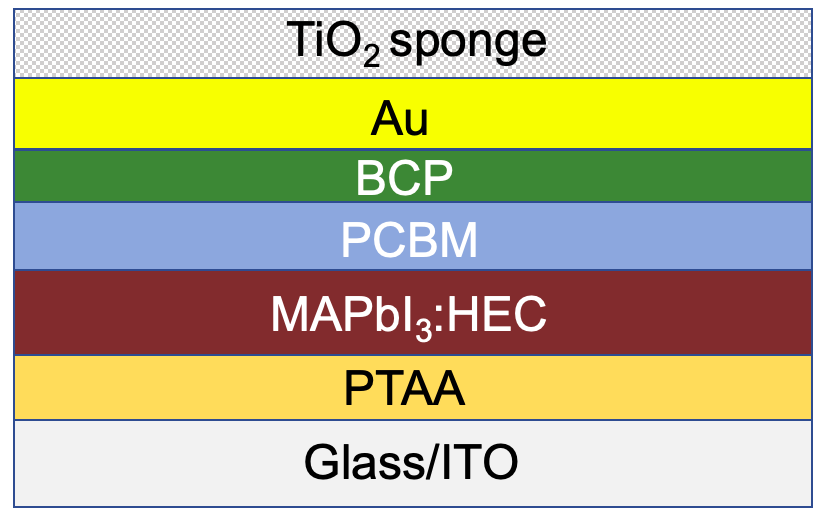Scientists from the Italian Institute for Microelectronics and Microsystems (CNR-IMM) have developed a semi-transparent perovskite solar cell. They achieved this by depositing a titanium oxide (TiO2) sponge on the device to prevent potential lead (Pb) leakage.
“We conceived the solar cell for applications in building-integrated photovoltaics (BIPV) and agrivoltaics, where the potential lead leakage can be viewed as a serious public environmental and health risk source,” researcher Salvatore Valastro told pv magazine.
TiO2, a highly adsorbent material, serves as an effective electron transport layer (ETL) in perovskite solar cells. To address potential lead (Pb) leakage, the researchers created a solvent-free porous TiO2 film, forming a sponge-like structure capable of capturing Pb from damaged cells during simulated catastrophic events.
“The TiO2 sponge can sequester Pb in concentrations ranging from 24 g cm2 to 63 g cm2, which are equivalently contained in MAPbI3 layers with thicknesses from 200 nm (semi-transparent PSC) to 500 nm (opaque PSC),” the researchers explained.
They built the cell with a substrate made of glass and indium tin oxide (ITO), a hole transport layer (HTL) made of poly-triarylamine (PTAA), a perovskite absorber with the TIO2 sponge, an electron acceptor made of phenyl-C61-butyric acid methyl ester (PCBM), a bathocuproine (BCP) buffer layer, a gold (Au) metal contact, and the TIO2 sponge.
“We deposited the sponge via a physical solvent-free deposition, by using sputtering equipment, an easily up-scalable deposition method, which is widely used by semiconductors manufacturing companies,” Valastro said. “A pre-sputtering step of 1 min is performed before the deposition process to clean up the surface of the titanium target to remove oxidized layers.”
The solar cell achieved a power conversion efficiency of 11.6% and has an average visible transmittance (AVT) of 31.4%. “The efficiency value of 11.6% is characteristic of this semi-transparent architecture,” said Valastro.
The research team described the cell tech in “Preventing lead leakage in perovskite solar cells with a sustainable titanium dioxide sponge,” which was recently published in Nature Sustainability.
“Our method represents a concrete step forward in addressing Pb release for BIPV, BAPV, agrivoltaics and opaque devices, and also paves the way for Pb recycling in end-of-life devices,” the team concluded.
This content is protected by copyright and may not be reused. If you want to cooperate with us and would like to reuse some of our content, please contact: editors@pv-magazine.com.




1 comment
By submitting this form you agree to pv magazine using your data for the purposes of publishing your comment.
Your personal data will only be disclosed or otherwise transmitted to third parties for the purposes of spam filtering or if this is necessary for technical maintenance of the website. Any other transfer to third parties will not take place unless this is justified on the basis of applicable data protection regulations or if pv magazine is legally obliged to do so.
You may revoke this consent at any time with effect for the future, in which case your personal data will be deleted immediately. Otherwise, your data will be deleted if pv magazine has processed your request or the purpose of data storage is fulfilled.
Further information on data privacy can be found in our Data Protection Policy.